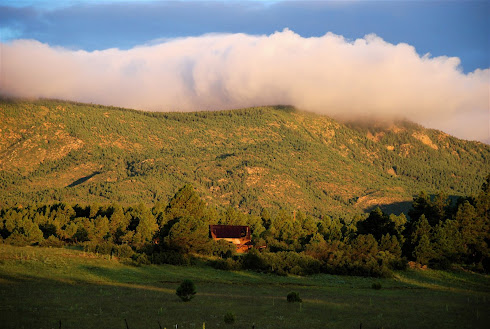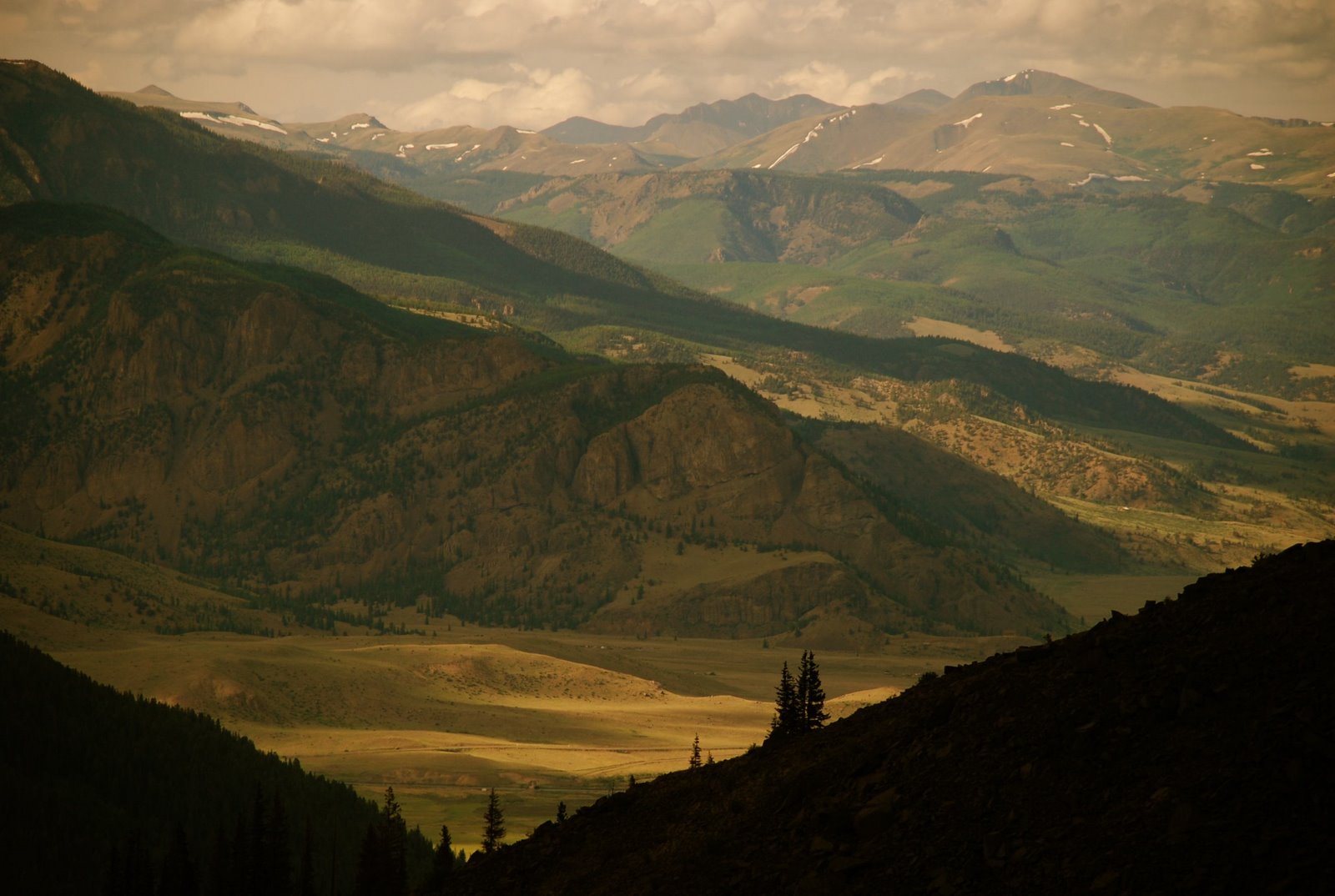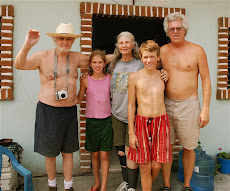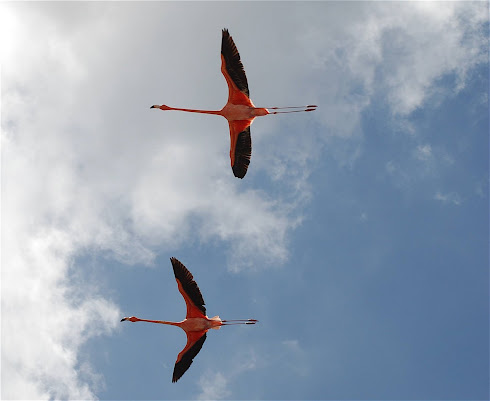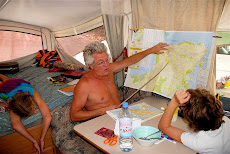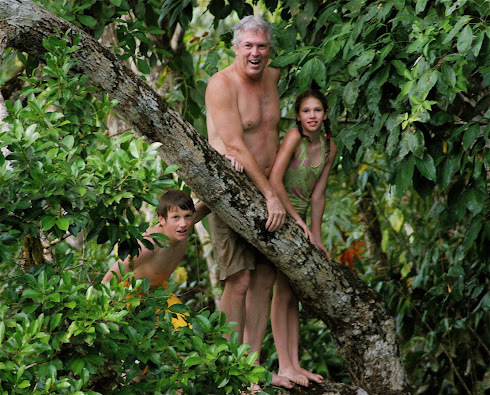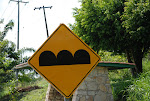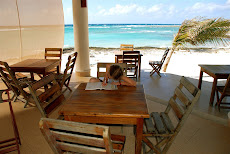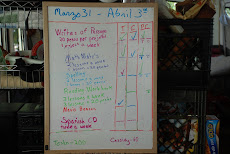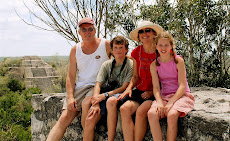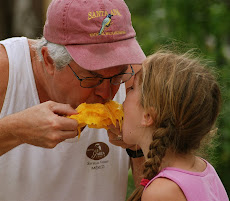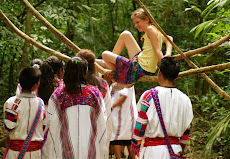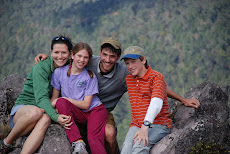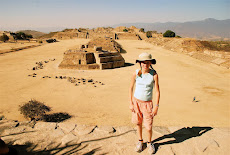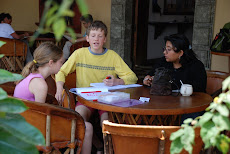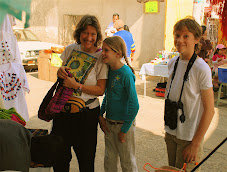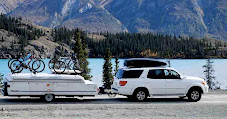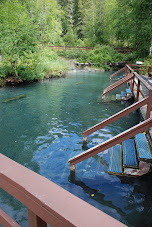I am sitting in Popi having a nice cup of tea and listening to the traffic and bird sounds of Monday morning in San Miguel de Allende. We are in La Siesta Hotel and RV Park on the edge of town. It’s the closest you can get to Centro with anything larger than a van. There are 2 other rigs here, but so far we haven’t seen any people. Most campers have made their way north by now. Perhaps to avoid the intensely hot weather we’ve experienced over the last few weeks. Coming up through the state of VeraCruz, it was in the high 90’s and very humid. Someone told us the town of Vera Cruz had set a new record 3 days ago…49 degrees C. I remember sitting in our Posada in Oaxaca having Celsius lessons from our friend Dan. He said the low 20’s were cool and comfortable, and approaching 30 is a hot afternoon. 49 must be cauldron weather.
Driving somewhere near the port of Vera Cruz we stopped at a Pemex station and the car’s thermometer was at 100. It was so humid out it looked foggy. I came back from the bathroom and asked Chris…..”Surely Tucson can’t feel hotter than THIS at it’s worse!....?” The unfortunate answer was: “Well…….actually, it can”. The nights here in San Miguel are forgiving….the climate is dry and the temps go down into the 60’s late in the evening. We had 3 nights on our way here that were in the 80’s and humid. The big Kahuna just blew mist on us. There is something to be said about a dry climate that cools off nicely at night.
VOYAGE UPDATE
We left Paa Mul on May 1st and headed to Valladolid via Tulum, about 2 hours away. We spent 2 nights there, camped at a great restaurant, Restaurante Hacienda Ticuch, just outside of town. It was an old Hacienda with a huge grounds complete with a chapel, peacocks, a tiny pool, and extremely friendly people. It’s only drawback (besides the near 100 degree weather) was that it had “Topes” right out front. This meant that during the night all the trucks approached the “topes” going fast and put their jake breaks on (that loud sound semis make slowing down). Then, once across it, they’d slam their foot on the accelerator and take off again. The peacocks also had their stories to tell all night.
Vallodolid was a great jump off point for Rio Lagartos. Cassidy wrote a great blog entry on Rio Lagartos, and you can see his post for specifics on bird species (www.birdnutsblog.blogspot.com) . We hired a boat and guide up at the port in Rio Lagartos, and went out for about 4 hours. Our guide was Erik Ramos Celis, and he was very knowledgeable about birds (www.negroerik@hotmail.com). We passed on the offer to visit the salt ponds where you could smear salt paste all over your body (a favorite with the Mexican tourists), and concentrated on the channels that led through the mangroves as well as the more open estuaries where the flamingos were. We saw 49 species of birds, and got fairly close to a group of several hundred flamingos. They were quite skittish but we were able to get out of the boat and approach them from behind some dunes. We observed them for several minutes from 30-40 yards away before they saw us and took off en masse. They then continued to circle around for awhile before settling down a bit further away. There was a huge pile of salt in the distance, and evidently they manufacture it in the area. All the places I’ve seen flamingos in the wild have been in areas where salt was harvested (Celustun, Rio Lagartos, and Bonaire). The critters that are the basis of the flamingos’ diet must thrive in the shallow, high salinity waters of these areas.
From Vallodolid, we spent one rather luxurious hot night at the Mayaland Hotel and Bungalows right at the archeological site of Chichen Itza. Chris and I had been there on our 10th anniversary trip, and the kids wanted to see it for themselves. It is a 100 acre spot, with amazing grounds, trees, peacocks wandering around, and lots of birding. We had fun being in a bungalow for the night. Chris and I slept in the loft under the thatch. At dawn, we awoke to a symphony of bird song, a lot of which was coming from the top of the thatch a few feet away. It was like waking up in the boughs of a tree. We found the Chichen Itza ruins HOT, busy, and disappointing after our amazing tours in Chiapas.
From Chichen Itza, we went down to Isla Aguada, a tiny fishing village on the gulf coast of Campeche (a bit north of Ciudad del Carmen). We had our first tire blowout of the trip on the trailer which luckily happened on probably the only stretch of Mexican highway with a level median which we slowly drove on to and changed the tire. Chris had the joyful experience of watching the sun set across the gulf while he did his duty and got us back on the road. We had heard that there was a great RV place right on the water in Isla Aguada that was peaceful and fun. It was peaceful alright….mostly because it was WAY TOO HOT to be camping on the gulf. Anyway…..I’m sure it would be a lovely spot at the right season. However, Chris and I decided sometime during the night to keep on trucking off the Yucatan Peninsula. We left right after breakfast the next day, and made it to Catemaco in the state of Vera Cruz.
CATEMACO
Ahhh…..CATEMACO!!!!! We stayed at the Tepetepan Hotel and RV park. Perched high above a river, up at 370 meters above sea level, it was heaven! We were again the only folks there (except for one night when a couple came through on their way north). We parked on the grass under an enormous mango tree that was heavy with almost ripe fruit. Our site was the last one before the river, and overlooked the opposite bank where towering trees and vines were a favorite perch for a flock of black vultures The river gorge was a flyway for all sorts of birds. The first morning I woke up to see flocks of snowy egrets, green herons, black vultures, double crested cormorants, various hawks (Cassidy saw a laughing falcon), and an assortment of wonderful song birds going by. This was easily one of the most beautiful RV parks we had stayed at in Mexico.
Catemaco is an amazing area. It is in an area known as Los Tuxtlas, in Southern Vera Cruz state. It is a mountainous, jungle area with lakes, waterfalls, great swimming places, and lots of rivers. Catemaco is on the edge of a beautiful lake, Laguna Catemaco, and is very popular with Mexican tourists (during holidays and the summer). There is a road going down along the lakefront in town, the Malecon, that is lined with huge trees, currently filled with thousands of nesting cattle egrets. They were making quite a racket, and it seemed that many of the chicks were fledging, dropping out of their nests to wander awkwardly around the lake front, their parents squawking after them.
Our favorite haunt was Poza Reyna (Reina), a waterfall and swimming hole about an hours drive from Catemaco. The drive was an adventure itself winding through the countryside on a dirt road over several cattle guards and going through areas that until recently had been tropical jungle. There were few signs along the way which led to us going 2 miles up a steep 4 wheel drive road into the mountains before a campesino came out to see who in the world had made it up this far to his shack in the mountains. He helped us find a place to turn around and directed us back to where we needed to go. We finally found the water hole which was accessed by parking next to a cattle pen and walking down a path some 5 minutes to the river. The Pozo or waterhole is fed by very cool springs, and was the most refreshing water we’ve found. There is a very large swimming hole under it with several more downriver which we also explored over several hours, and I’m sure Chris will put in some great pics.
We spent 4 nights in Catemaco….it was hot during the day, but had great places to cool off. We didn’t see many travelers, and it was a peaceful, beautiful area. Chris and Cassidy did a birding trip the last day with Feliz Aguilar and saw some Toucans and large flocks of Moctezuma Oropendula among other birds, and we returned twice to Poza Reyna. We’ve marked Catemaco down as a great place to return to and explore for an extended period. There was just too much to do to pack in to this trip.
JIM & MINDY’S
We drove from Catemaco up the coast to just outside the port of Veracruz and then headed NW up the road towards Xalapa. We had been communicating with a great couple on the internet who had settled up in the countryside outside of Xalapa close to Los Baños Carrizal after moving there from Tucson and decided to stop and visit. Here is their blog: http://blog.solarhaven.org/. Jim and Mindy had built a great house outside of Tucson “off the grid” which incorporated many solar and other energy conserving principles before moving to Mexico. Their place in Chahuapan was a small block house with mango trees in the yard with their Airstream parked next to it with an additional place where we could park Poppi. We had a great visit with them, sharing supper and breakfast together while we all talked about our experiences and reasons for being vagabundos. We finally left late the next morning continuing our migration northward.
We finally got a break from the heat as we climbed the mountain range around Xalapa, leaving a hot and dry zone in to a lush, green and much cooler area just west of Xalapa. The temperature dropped from 95 degrees to 75 degrees after 2 hours of gaining elevation and we even opened the windows for while. We stayed north of Mexico City to avoid traffic and the “no drive day rules” of the Districto Federal and traveled via Pachuca to the smaller town of Ixmiquilpan. We had some great meals there at local “Barbacao” restaurants where we ingested large quantities of red meat of all varieties. We even had an amazing bowl of “menudo” for breakfast to go along with our “Borrego” tacos which made Anny long even more for the land of salads and stir fry’s up north. Another half day’s drive brought us here to San Miguel de Allende were we have settled in for a couple of nights so that we can do some nice walks through the city and regroup before the final push north.
Anny and Chris

